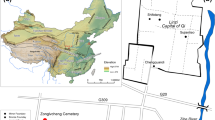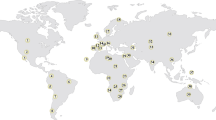Abstract
Elemental analyses and microstructural studies of historical metal artifacts provide researchers with invaluable and priceless information about metal extraction technology and the procedure of creating artifacts. In addition, the information is helpful for knowing about the metallurgical processes of the artifacts. This study was conducted by a microscopic examination and elemental analyses of seven Sasanian silver coins preserved in the Sistan Anthropology Museum, Iran. For the purpose of this study, three methods were employed: first, the proton induced X-ray emission microanalysis (micro-PIXE), to determine the main and trace elements of the coins; second, scanning electron microscopy with energy dispersive X-ray spectroscopy (SEM-EDS), to perform elemental analysis to identify impurities of the metal; and third, microstructural analysis of the coins which was carried out with an optical microscope (OM). The elemental analyses identified Ca, Cu, Ag, Au, and Pb in the coins. The high quantity of Ag in samples validated the application of advanced and accurate cupellation technology for refining silver and separating impurities from raw ore. The gold concentration in the coins indicated the use of non-galena ore for silver extraction. Additionally, the microstructural analyses of samples pointed to the application of thermo-mechanical processes on coins.











Similar content being viewed by others
References
Avner SH (1964) Introduction to physical metallurgy. McGraw-Hill, New York
Bacharach JL, Gordus AA (1972) The purity of Sasanian silver coins: an introduction. J Am Orient Soc 92(2):280–283
Bird V, Hodges H (1968) A metallurgical examination of two early iron swords from Luristan. Stud Conserv 13:215–223
Campbell J, Boyd N, Grassi N, Bonnick P, Maxwell J (2010) The Guelph PIXE software package IV. Nucl Instrum Methods Phys Res, Sect B 268:3356–3363
Chase WT (1968) The technical examination of two Sasanian silver plates. Ars Orientalis 75–93
Constantinescu B, Bugoi R, Oberlander-Tarnoveanu E, Parvan K (2005) Some considerations on X-ray fluorescence use in museum measurements—the case of medieval silver coins. Romanian Reports in Physics 57:1021
Costa V (2001) The deterioration of silver alloys and some aspects of their conservation. Stud Conserv 46:18–34
Craddock P (2009) Scientific investigation of copies, fakes and forgeries. Butterworth-Heinemann, Oxford
Craddock P (2014) Production of silver across the ancient world. ISIJ Int 54:1085–1092
Frame L (2010) Metallurgical investigations at Godin Tepe, Iran. Part I: the metal finds. J Archaeol Sci 37:1700–1715
Giovannelli G, Natali S, Bozzini B, Siciliano A, Sarcinelli G, Vitale R (2005) Microstructural characterization of early western Greek incuse coins. Archaeometry 47:817–833
Grime G, Watt F (1988) Focusing protons and light ions to micron and submicron dimensions. Nucl Instrum Methods Phys Res, Sect B 30:227–234
Hajivaliei M, Mohammadifar Y, Ghiyasi K, Jaleh B, Lamehi-Rachti M, Oliaiy P (2008) Application of PIXE to study ancient Iranian silver coins. Nucl Instrum Methods Phys Res, Sect B 266:1578–1582
Hörz G, Kallfass M (2000) The treasure of gold and silver artifacts from the Royal Tombs of Sipán, Peru—a study on the Moche metalworking techniques. Mater Charact 45:391–419
Hughes MJ, Hall J (1979) X-ray fluorescence analysis of late Roman and Sassanian silver plate. J Archaeol Sci 6:321–344
Kallithrakas-Kontos N, Katsanos A, Touratsoglou J (2000) Trace element analysis of Alexander the Great’s silver tetradrachms minted in Macedonia. Nucl Instrum Methods Phys Res, Sect B 171:342–349
Kantarelou V, Ager FG, Eugenidou CF, Andreou A, Kontou E, Katsikosta N, Respaldiza MA, Serafin P, Sokaras D, Zarkadas C, Polikreti K, Karydas AG (2011) X-ray fluorescence analytical criteria to assess the fineness of ancient silver coins: application on Ptolemaic coinage. Spectrochimica Acta Part B: Atomic spectroscopy 66:681–690
Linke R, Sehreiner M, Demortier G, Alram M, Winter H (2004) The provenance of medieval silver coins: analysis with EDXRF, SEM/EDX and PIXE. Compr Anal Chem 42:605–633
Meyers P (2003) Production of silver in antiquity: ore types identified based upon elemental compositions of ancient silver artifacts. In: patterns and process: a Festschrift in Honor of Dr. Edward V. Sayre, p 271–288
Meyers P, Harper P (1981) Silver vessels of the Sasanian period. I: the Royal Imagery New York
Meyers P, Sayre EV (1971) The determination of trace elements in ancient silver objects by thermal neutron activation analysis. Bulletin of the American Group International Institute for Conservation of Historic and Artistic Works 11:29–33
Meyers P, Van Zelst L, Sayre EV (1973) Determination of major components and trace elements in ancient silver by thermal neutron activation analysis. J Radioanal Chem 16:67–78
Moorey P (1994) Ancient Mesopotamian materials and industries? The archaeological evidence. Clarendon Press, Oxford
Mortazavi M, Salehi Kakhki A, Golozar MA, Tala’i H (2011) Preliminary metallurgical investigation of copper-based artifacts at Tepe Sagzabad in Qazvin Plain, Iran (1500–800 BC). Iranian Journal of Archaeological Studies 1:49–59
Nezafati N, Pernicka E (2012) Early silver production in Iran. Iranian Archaeology 3:38–45
Northover P, Northover S, Wilson A (2013) Microstructures of ancient and historic silver
Philip G, Rehren T (1996) Fourth millennium BC silver from Tell esh-Shuna, Jordan: archaeometallurgical investigation and some thoughts on ceramic skeuomorphs. Oxf J Archaeol 15:129–150
Pistofidis N, Vourlias G, Pavlidou E, Dilo T, Civici T, Stamati F, Gjongecaj S, Prifti I, Bilani O, Stergioudis G (2006) On the comparative study of three silver coins of the IIIrd century BC minted in Korkyra, Dyrrachion and by the Illyrian king Monounios. Applied Physics A 83:637–642
Scott DA (1990) A technical and analytical study of two silver plates in the collection of the J. Paul Getty Museum. The J Paul Getty Museum Journal 18:33–52
Scott D (1991) Metallography and microstructure of ancient and historic metals. Los Angeles, The J. Paul Getty Trust, 1991a
Scott DA (2011) Ancient metals: microstructure and metallurgy. Vol 1. Lulu. com
Stuart BH (2007) Analytical techniques in materials conservation. John Wiley & Sons, New York
Tripathy B, Rautray TR, Rautray A, Vijayan V (2010) Elemental analysis of silver coins by PIXE technique. Appl Radiat Isot 68:454–458
Wanhill R (2011) Case histories of ancient silver embrittlement. J Fail Anal Prev 11:178–185
Wood JR, Charlton MF, Murillo-Barroso M, Martinón-Torres M (2017) Iridium to provenance ancient silver. J Archaeol Sci 81:1–12
Acknowledgments
Dr. Ali Asadi (archeologist) is gratefully acknowledged for providing important information. Authors wish to thank BA. Narges Mortazavi for editing the text. The authors would like to express their special thanks of gratitude to B. Rahmani, responsible for SEM laboratory in Razi Foundation, Tehran, Iran.
Author information
Authors and Affiliations
Corresponding author
Rights and permissions
About this article
Cite this article
Mortazavi, M., Naghavi, S., Khanjari, R. et al. Metallurgical study on some Sasanian silver coins in Sistan Museum. Archaeol Anthropol Sci 10, 1831–1840 (2018). https://doi.org/10.1007/s12520-017-0511-8
Received:
Accepted:
Published:
Issue Date:
DOI: https://doi.org/10.1007/s12520-017-0511-8




